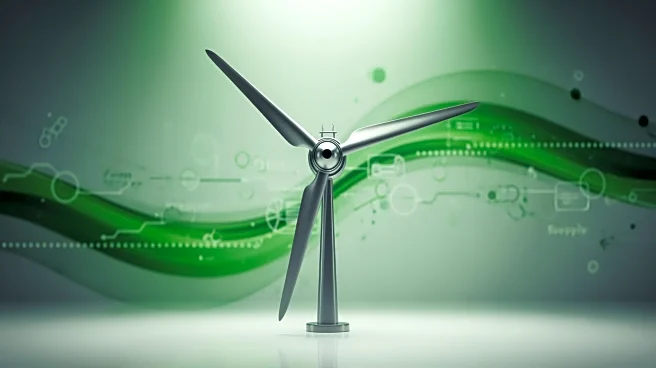What's Happening?
The Energy Information Administration (EIA) has reported a significant increase in ethanol production, reaching a record high. For the week ending October 31, production averaged 1.123 million barrels
per day, marking the highest level since record-keeping began in 2010. The Midwest, the largest producing region, saw output rise to 1.061 million barrels per day. Other regions, such as the Gulf Coast and Rocky Mountains, also experienced increases. Ethanol stockpiles rose to 22.655 million barrels, the highest in nearly a month. This surge in production comes amid fluctuating grain futures, with soybean and corn futures experiencing declines due to weak Chinese purchases.
Why It's Important?
The increase in ethanol production is significant for the U.S. energy sector, as it reflects growing demand and capacity for biofuels. Ethanol is a key component in reducing reliance on fossil fuels and promoting renewable energy sources. The rise in production may influence market dynamics, potentially affecting fuel prices and agricultural markets. The Midwest's role as a major producer highlights regional economic benefits, while increased stockpiles suggest potential shifts in supply chain strategies. This development could impact U.S. energy policy, particularly in discussions around sustainable energy and climate change mitigation.
What's Next?
The record high in ethanol production may lead to further investments in biofuel infrastructure and technology. Stakeholders, including policymakers and industry leaders, might explore opportunities to expand ethanol's role in the energy mix. Additionally, the agricultural sector may adjust strategies to align with changing demand for corn and other feedstocks used in ethanol production. Monitoring future EIA reports will be crucial to understanding ongoing trends and their implications for energy and agricultural markets.
Beyond the Headlines
The surge in ethanol production raises questions about environmental impacts and sustainability. While biofuels are considered cleaner alternatives to fossil fuels, their production involves land use changes and resource consumption. Balancing economic growth with environmental stewardship will be a key challenge. Furthermore, the geopolitical landscape, including trade relations with China, could influence future ethanol demand and production strategies.












